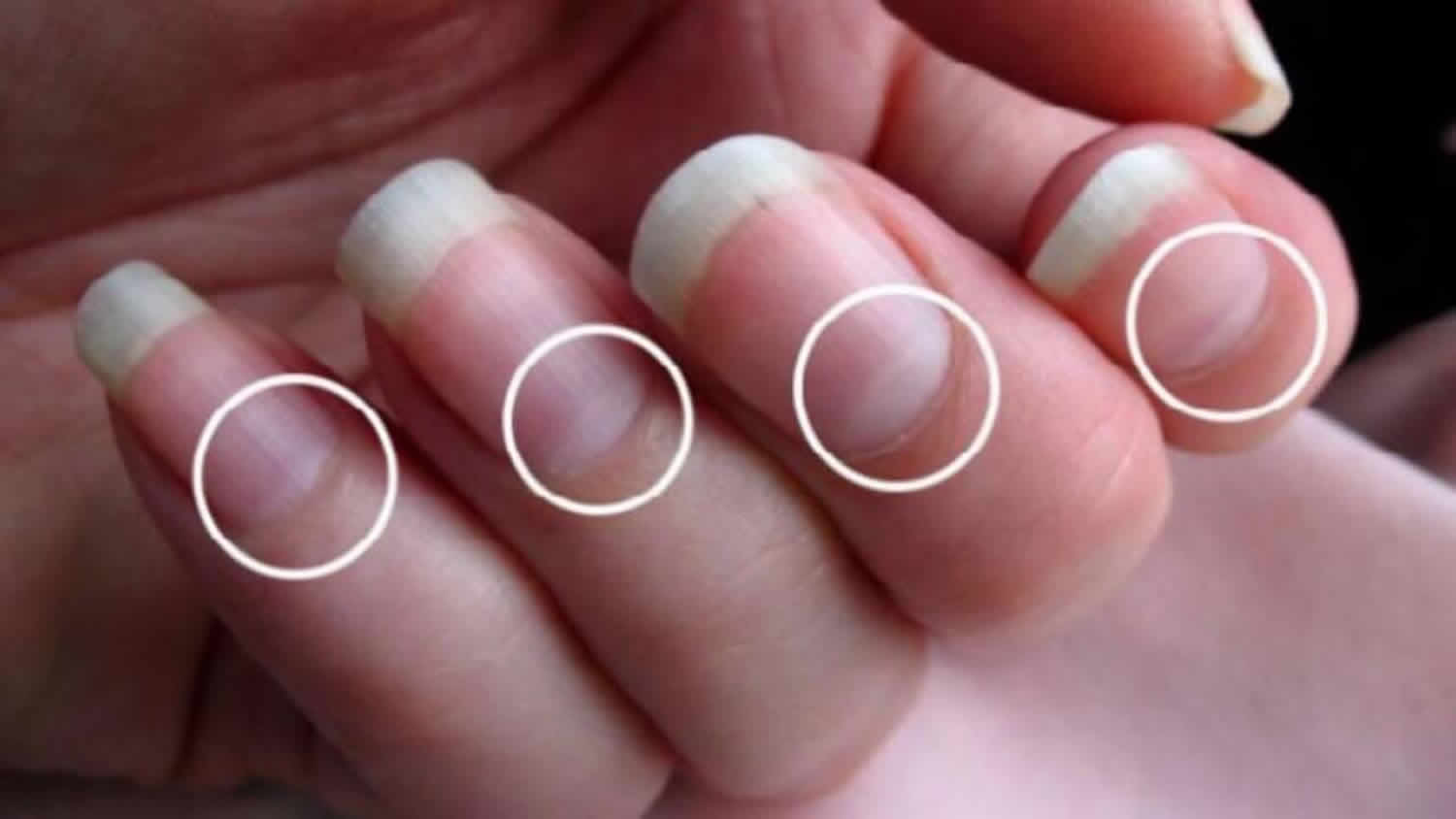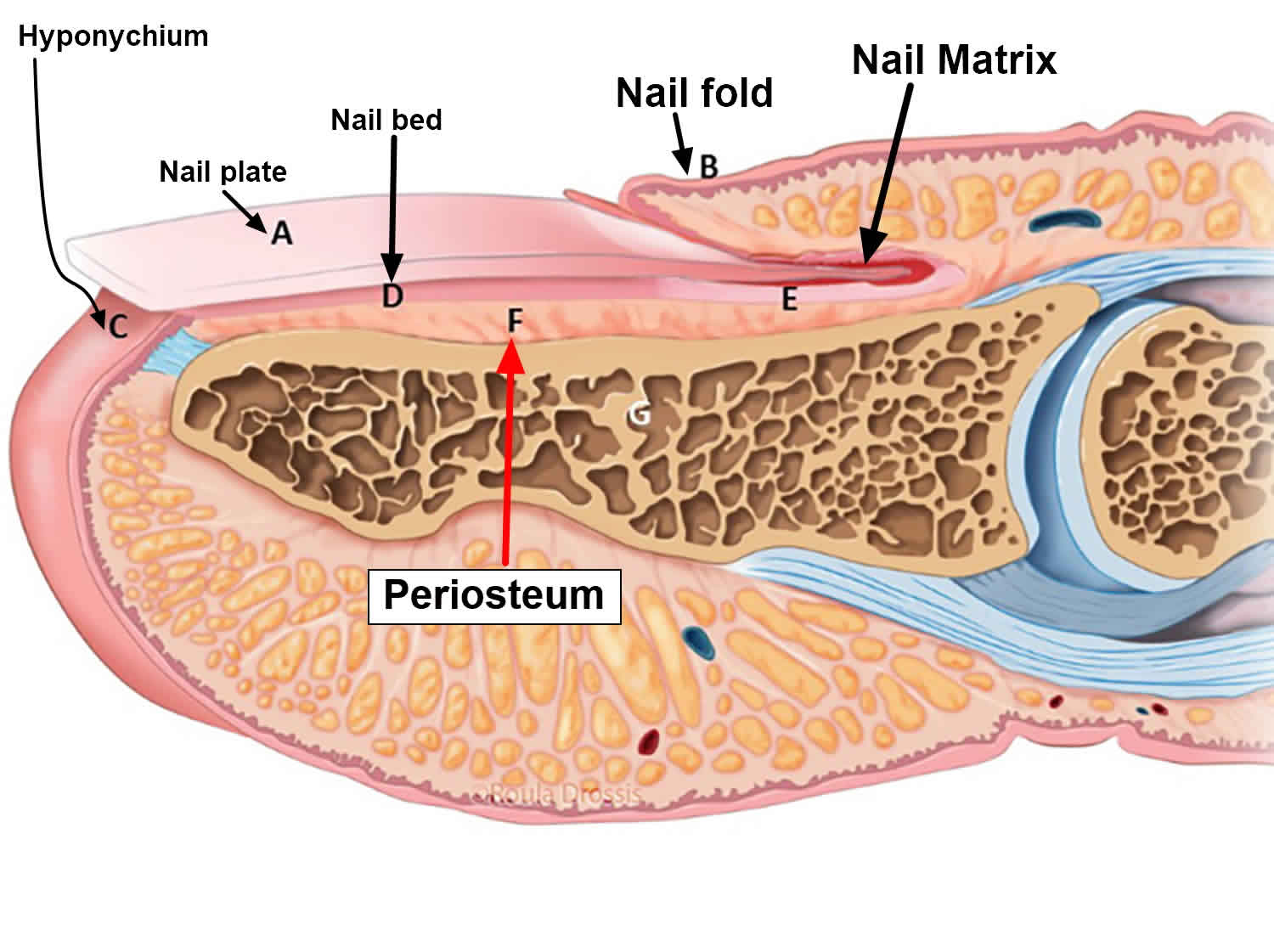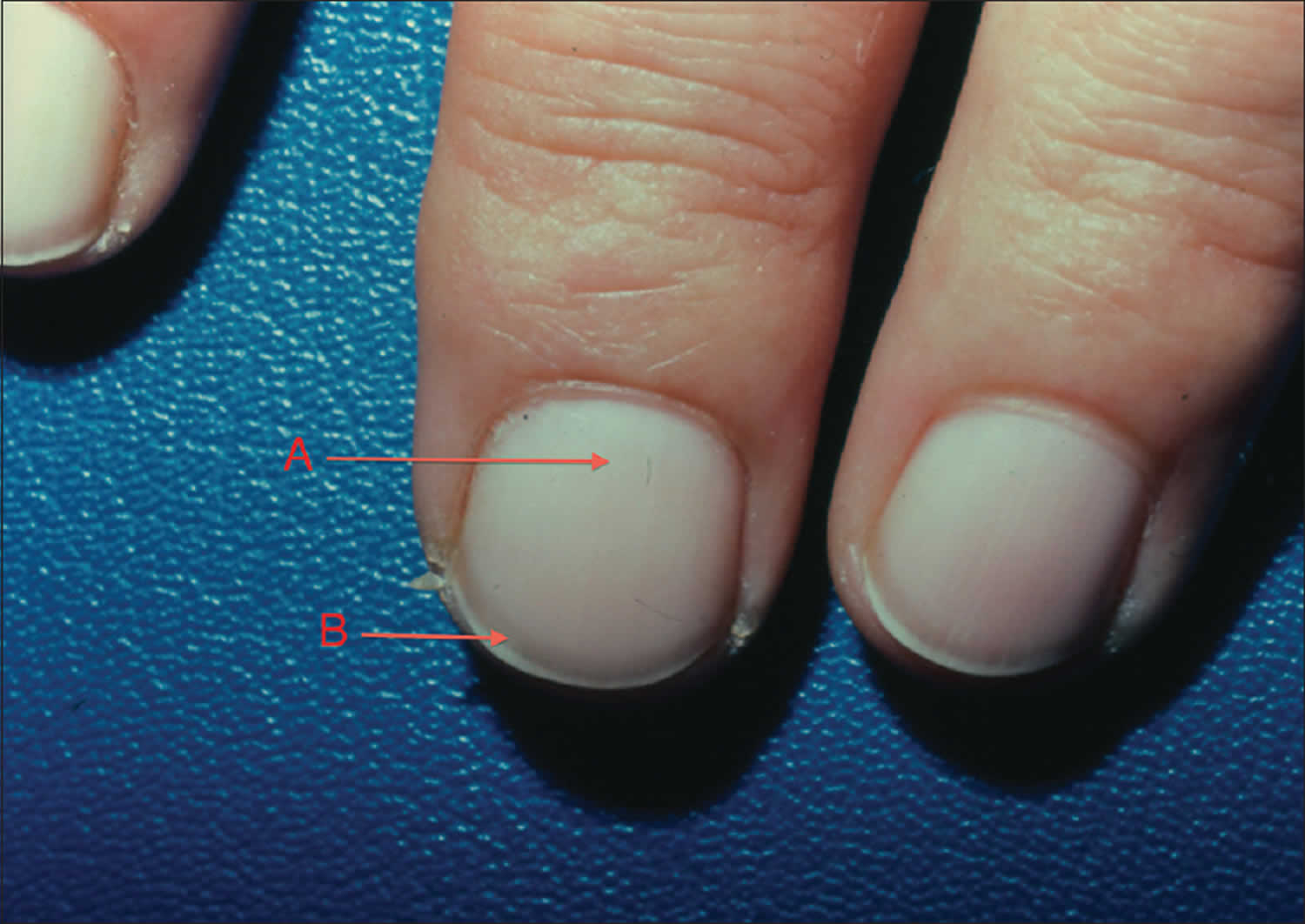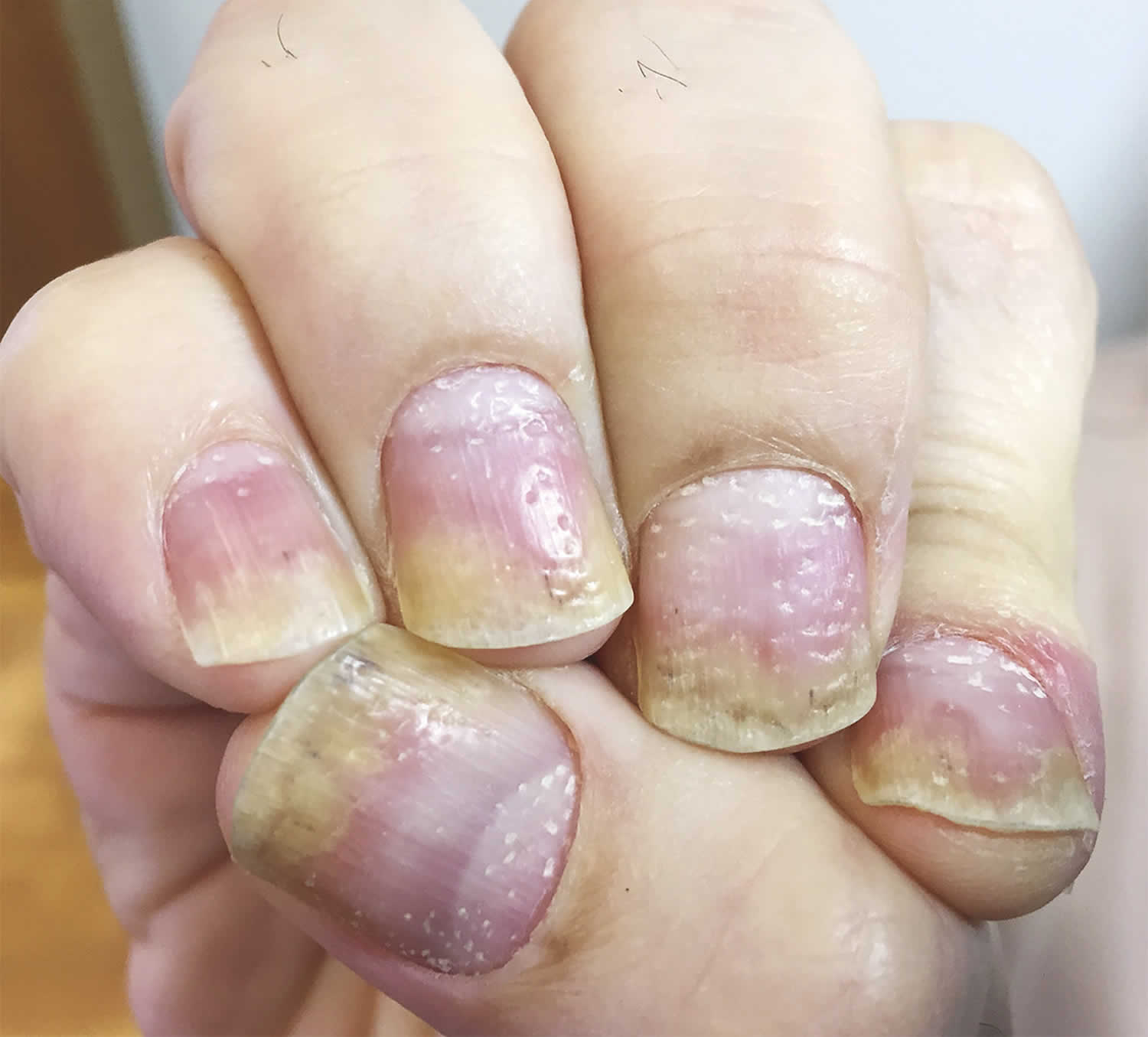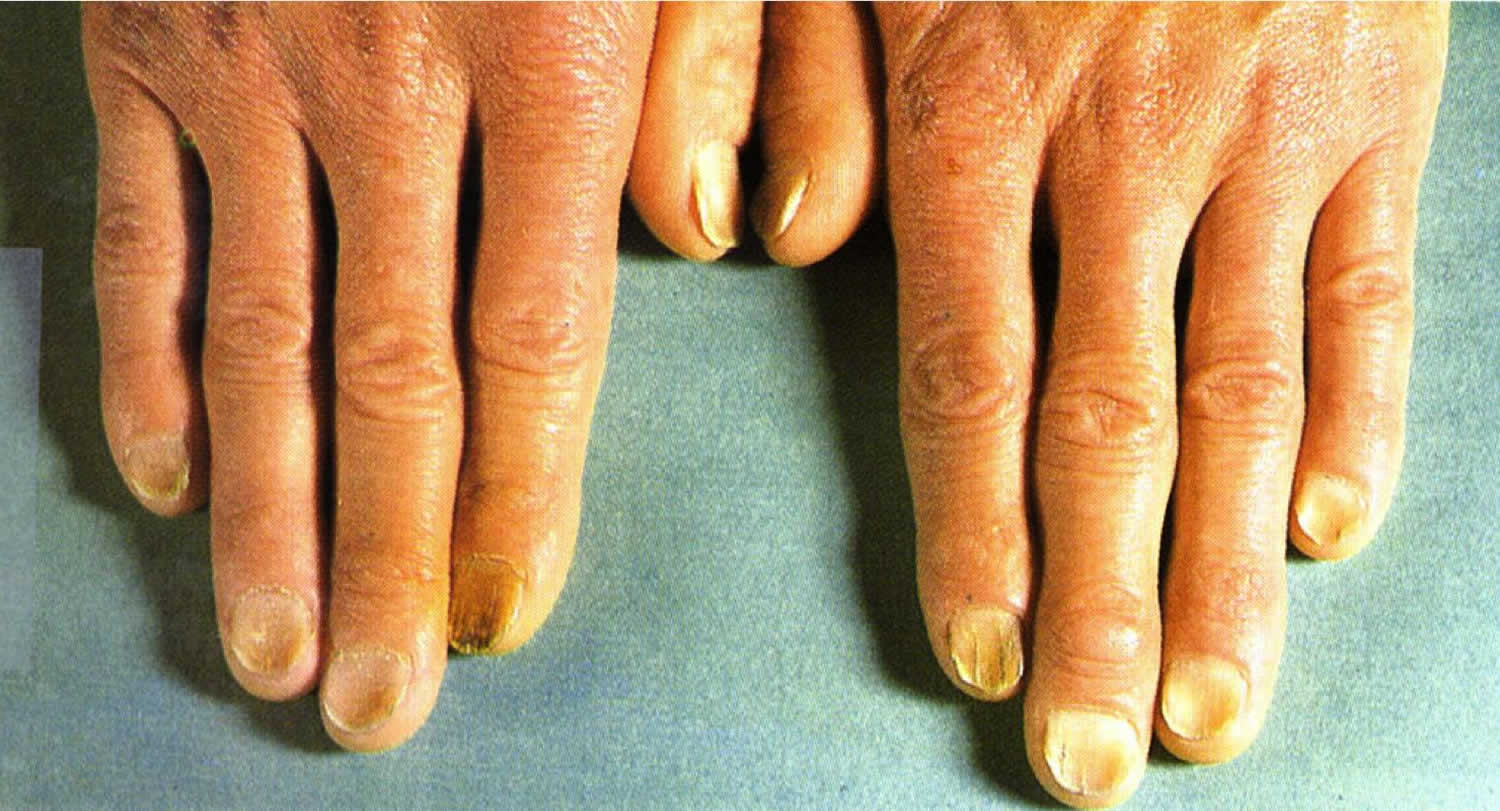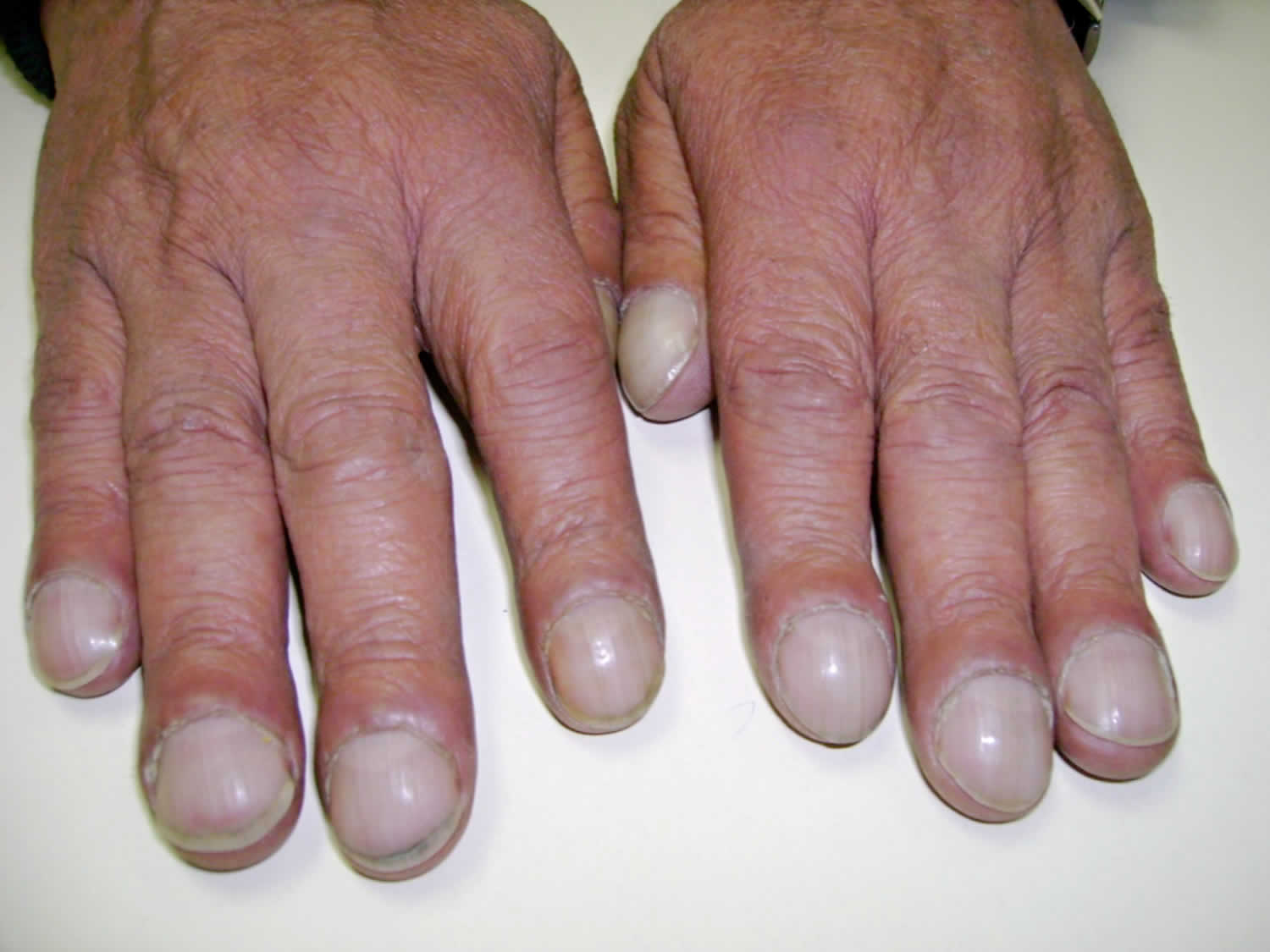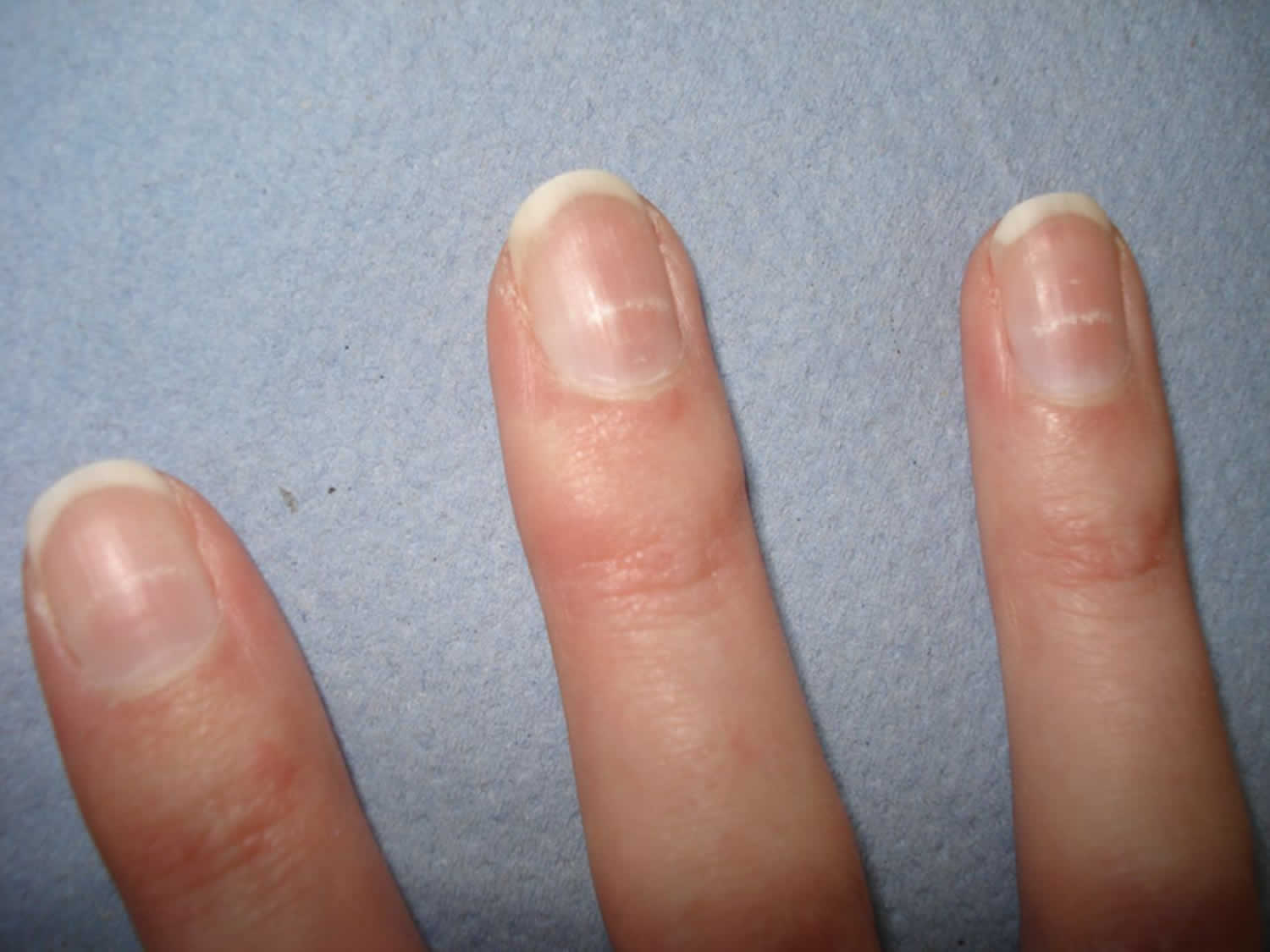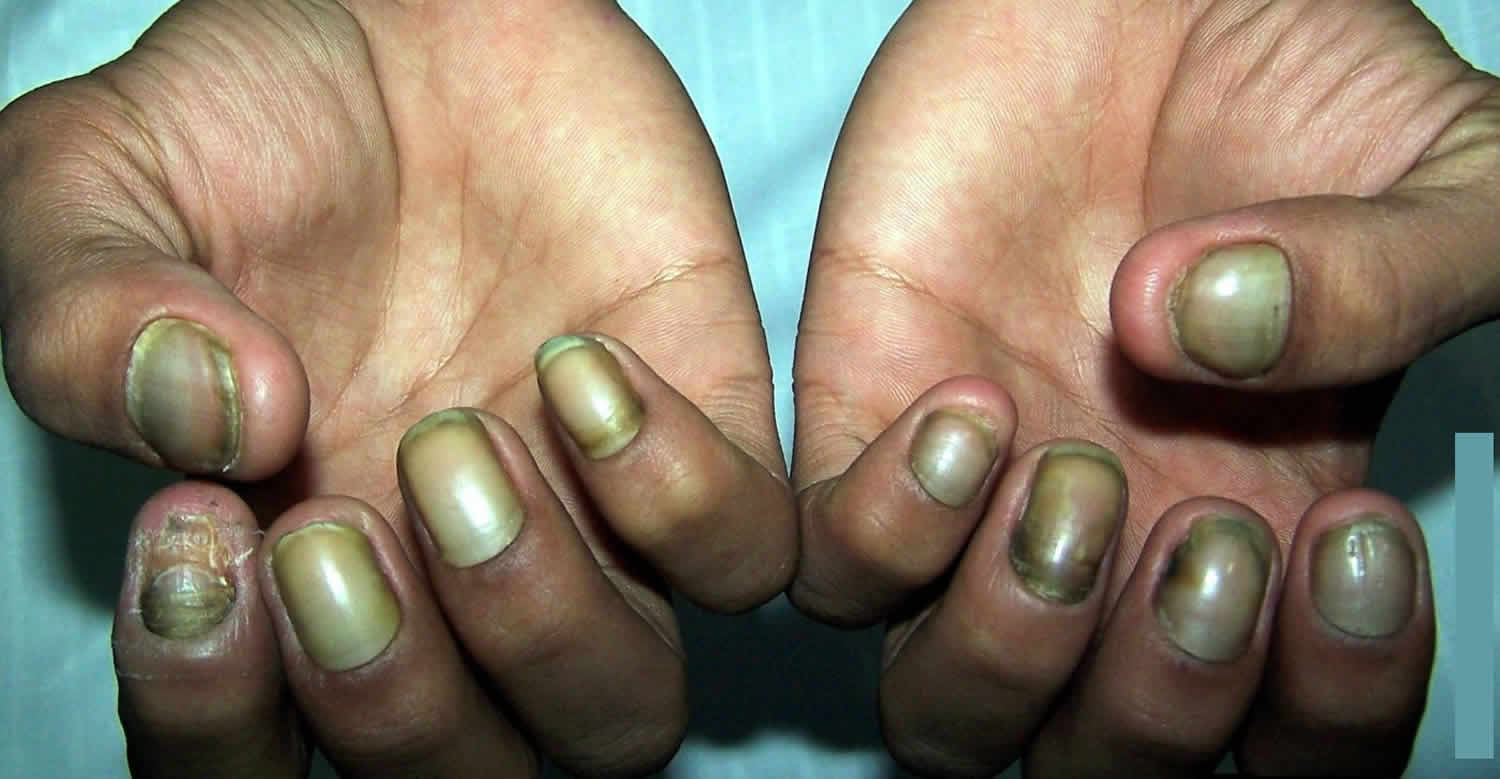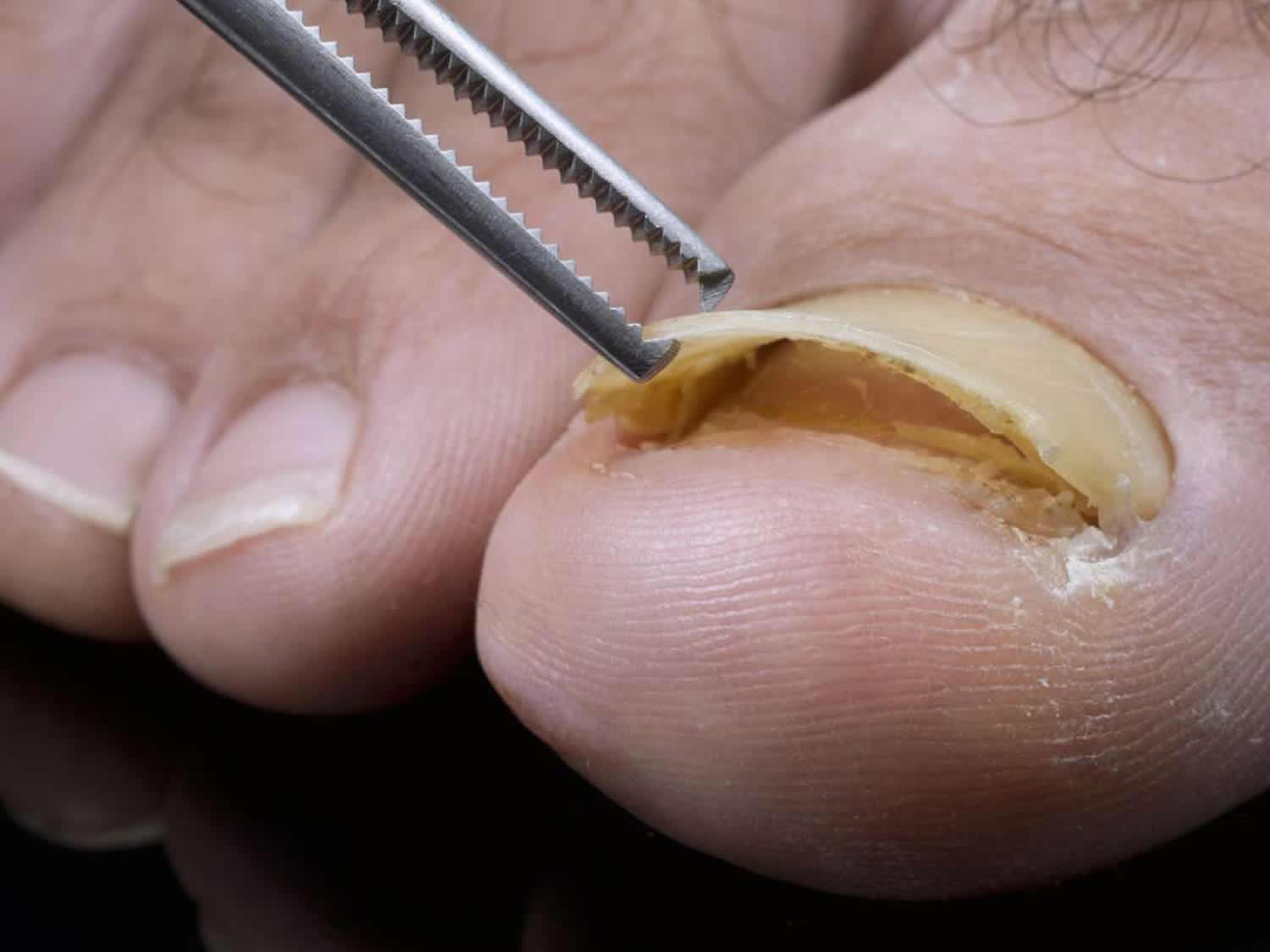What is lunula
Lunula or lunule is that whitish half circle that you sometime see at the bottom of your nails. Your lunula is actually part of the nail matrix. You might be able to see it only on your thumbnails or maybe not at all. Don’t worry if you can’t see a lunula on any of your fingers. It’s no big deal. It’s there, just under your skin.
The nail bed extends from the lunula to the hyponychium. A set of ridges on the underside of the nail plate extend to the lunula, with the small vessels transporting blood and other fluids being orientated on the same axis.
The epidermis of the nail bed is mainly thick, and becomes thicker at the nail folds. The dermis is sparse and contains very little fat. Sweat ducts can also be found at the end of the nail bed.
Your nail has a multitude of functions including protective, mechanical, thermoregulatory, cosmetic, and economic 1. Nails provide a rigid barrier for the distal digits and prevent hypertrophy that has been shown to ensue after great toe avulsions 2. The free edge of the nail is a useful tool for grasping small objects and scratching.[18] The nail contributes to tactile perception by providing counter-pressure to the fingertips 2. The glomus bodies help regulate the body’s temperature by diverting blood flow from the capillaries. Nails are a platform for aesthetics, which provides occupation for many. If nails grow too long, they can cause a functional decline as shown by diminished grip strength and typing speeds with longer nail length 3.
Not all nail conditions are normal, however. Consult your doctor or dermatologist if you notice:
- Changes in nail color, such as discoloration of the entire nail or a dark streak under the nail
- Changes in nail shape, such as curled nails
- Thinning or thickening of the nails
- Separation of the nail from the surrounding skin
- Bleeding around the nails
- Swelling or pain around the nails
- Failure of nails to grow out
A note about manicures and pedicures
If you rely on manicures or pedicures for healthy-looking nails, keep a few things in mind. Stick to salons that display a current state license, and work only with technicians also licensed by the state board. Don’t have your cuticles removed — they act to seal the skin to the nail plate, so removal can lead to nail infection. Also, make sure your nail technician properly sterilizes all tools used during your procedure to prevent the spread of infection.
You might also ask how the foot baths are cleaned. Ideally, a bleach solution is used between clients and the filters are cleaned regularly.
It’s easy to neglect your nails — but taking some basic steps can keep your fingernails healthy and strong.
Figure 1. Fingernail
How nails grow
- The nail matrix: Each nail begins growing out of a little pocket under your skin. This is the root of the nail, and it’s called the nail matrix. The nail matrix constantly makes new cells. These new cells force the old ones to get packed together and pushed up through the skin. By the time the nail pokes out of the skin (where you can see it), those cells are dead. That’s why it doesn’t hurt to cut your nails.
- The cuticle: You might have heard about other parts of the nail, such as the cuticle. This is a tiny sliver of skin where your nail grows out of your finger. It protects the root or the matrix from germs.
- The lunula: The small, whitish, half-moon shape that you sometime see at the bottom of your nails is called the lunula. It’s actually part of the matrix. You might be able to see it only on your thumbs, or maybe not at all. Don’t worry if you can’t see a lunula on any of your fingers. It’s no big deal. It’s there, just under your skin.
Some interesting facts about nail growth are:
- Fingernails grow very slowly, and your toenails grow even more slowly.
- A fingernail will take half a year to grow back if you lose one because of an injury. If you lose a toenail, it might take a year and a half to grow back!
- Fingernails grow faster on your larger fingers and on your right hand if you’re right-handed, and your left hand if you’re left-handed.
- Fingernails also grow faster during the day and in the summer.
Nail production
The nail is made up of a substance called onchyn, which is produced by the death of germinal cells, which are cells that go on to become various types of cells. The nail is formed by these cells as they are pressed upward.
The nail is produced in three areas of the perionychium – the germinal matrix, sterile matrix and the nail matrix.
Germinal matrix
The majority of the nail is produced by the germinal matrix (around 90% by volume). This matrix extends from the base of the nail to the lunula. Cells in the matrix replicate by a process where the cells flatten and are pressed forward and upward while retaining their nuclei (the central body within a cell). This retention gives the nail its white colour through the arc of the lunula (the “moon” of the nail). Where the nuclei are lost, the nail is clear, showing the pink coloring of the nail bed through it.
Sterile matrix
The sterile matrix contributes to nail production as the nuclei of its cells disintegrate. When this occurs, 1-2 layers of germinal cells push upward and become attached to all the surrounding nail cells. These cells then become part of the nail that has been produced by the germinal matrix, and progresses towards the end of the nail with it. The nail therefore gets thicker towards the end to compensate for surface wear.
Nail matrix
The nail matrix produces the nail in a manner similar to the sterile matrix on the roof of the nail. The nail matrix produces the shine of the nail, and removing this part of the nail results in the shine of the nail being lost and can result in an irregular surface.
Nail care
Because your nails are important and can even help a doctor find out if you are healthy or not, it’s important to take good care of them. Here are some dos and don’ts of fingernail and toenail care.
DO:
- Keep them short and clean. Use a good nail clipper or a small nail scissors to cut them every week or two. If you let your nails get too long, they’re more likely to break and to get germs under them that can make you sick.
- Cut them in the shape of the tip of your finger, kind of straight across but a little round at the sides so they’re strong.
- Cut your toenails straight across, using a clipper designated for toenails. This will help prevent an ingrown toenail.
- Some people use a nail file or emery board (it looks like a popsicle stick with rough surfaces) to smooth the ends of their nails. Make sure that the file is not old and dull. It will work better if it is new. Rub it back and forth very gently along the end of your nail to remove any rough edges.
- Dry your hands really well after washing them, or getting them wet.
- Rub lotion on your fingernails, especially when your hands feel dry.
- Eating a healthy balanced diet keeps your nails strong.
- Change your socks every day.
- Wear flip flops in public showers and at the pool to prevent infections caused by a fungus that can get in your toenails.
DON’T:
- Bite your nails or pick at the skin around your nails. It can cause an infection and it hurts, too!
- Pry or poke at things with your nails. This can damage them.
- Cut or push back the cuticles, the tiny sliver of skin where your nail grows out your finger. That can lead to infection.
- Use nail-polish remover more than twice a month. It’s really hard on your nails.
- Use acrylic nails (artificial nails) as these can be very harmful to your nail and are not recommended.
- Wear shoes that are too tight, which can cramp your toes.
If you are having problems with your nails, ask your doctor.
Common nail problems
Most of the time, your nails are pink and healthy, but sometimes nails have problems:
- Ingrown nail — when the nail curves down and into the skin, causing pain and, sometimes, an infection
- Nail injury — when you drop something on your big toe or catch your finger in a drawer. A bruise may appear under the nail and sometimes the nail falls off. A new one grows in its place.
- Nail deformity — when the nail isn’t smooth, like a healthy nail. People who bite or pick at their nails a lot can have this problem, but it also can happen if someone has an illness that affects the nail.
- Hangnail — when a loose strip of dead skin hangs from the edge of a fingernail. Hangnails hurt if you pull them off.
- Terry’s nails — with the condition known as Terry’s nails, most of the nails appear white except for a narrow pink band at the tip. Terry’s nails can sometimes be attributed to aging. In other cases, Terry’s nails can be a sign of a serious underlying condition, such as liver disease, congestive heart failure, kidney failure or diabetes.
- Nail pitting — ice pick-like depressions in the nails (nail pitting) are common in people who have psoriasis — a condition characterized by scaly patches on the skin. Nail pitting can also be related to connective tissue disorders, such as Reiter’s syndrome, and alopecia areata — an autoimmune disease that causes hair loss.
- Spoon nails — spoon nails (koilonychia) are soft nails that look scooped out. The depression usually is large enough to hold a drop of liquid. Often, spoon nails are a sign of iron deficiency anemia or a liver condition known as hemochromatosis, in which your body absorbs too much iron from the food you eat. Spoon nails can also be associated with heart disease and hypothyroidism.
- Nail clubbing — Nail clubbing occurs when the tips of the fingers enlarge and the nails curve around the fingertips, usually over the course of years. Nail clubbing is sometimes the result of low oxygen in the blood and could be a sign of various types of lung disease. Nail clubbing is also associated with inflammatory bowel disease, cardiovascular disease, liver disease and AIDS.
- Beau’s lines — Beau’s lines are indentations that run across the nails. The indentations can appear when growth at the area under the cuticle is interrupted by injury or severe illness. Conditions associated with Beau’s lines include uncontrolled diabetes and peripheral vascular disease, as well as illnesses associated with a high fever, such as scarlet fever, measles, mumps and pneumonia. Beau’s lines can also be a sign of zinc deficiency.
- Yellow nail syndrome — with yellow nail syndrome, nails thicken and new growth slows. This results in a yellowish discoloration of the nails. Nails affected by yellow nail syndrome might lack a cuticle and detach from the nail bed in places. Yellow nail syndrome is often a sign of respiratory disease, such as chronic bronchitis. Yellow nail syndrome can also be related to swelling of the hands (lymphedema).
- Nail separation — with a condition known as onycholysis, the fingernails or toenails become loose and can separate from the nail bed. The separated part of the nail becomes opaque with a white, yellow or green tinge. Sometimes detached nails are associated with injury or infection. In other cases nail separation is a reaction to a particular drug or consumer product, such as nail hardeners or adhesives. Thyroid disease and psoriasis — a condition characterized by scaly patches on the skin — also can cause nail separation.
Figure 2. Terry’s nails
Footnote: Terry’s nails demonstrating ground glass opacification of nearly the entire nail with A – No visible lunula and B – A narrow band of normal, pink nail bed at the distal border
[Source 4 ]Figure 3. Nail pitting (nail psoriasis)
[Source 5 ]Figure 4. Spoon nails
Figure 5.
Figure 6. Beau’s lines
Figure 7. Yellow nail syndrome
Figure 8. Nail separation
- Brahs AB, Bolla SR. Histology, Nail. [Updated 2019 Apr 4]. In: StatPearls [Internet]. Treasure Island (FL): StatPearls Publishing; 2019 Jan-. Available from: https://www.ncbi.nlm.nih.gov/books/NBK539733[↩]
- de Berker DA, André J, Baran R. Nail biology and nail science. Int J Cosmet Sci. 2007 Aug;29(4):241-75[↩][↩]
- Jansen CW, Patterson R, Viegas SF. Effects of fingernail length on finger and hand performance. J Hand Ther. 2000 Jul-Sep;13(3):211-7[↩]
- Witkowska AB, Jasterzbski TJ, Schwartz RA. Terry’s nails: A sign of systemic disease. Indian J Dermatol 2017;62:309-11[↩]
- Tosti A., Daniel R., Piraccini B.M., Iorizzo M. (2010) Abnormal Surface. In: Color Atlas of Nails. Springer, Berlin, Heidelberg[↩]
